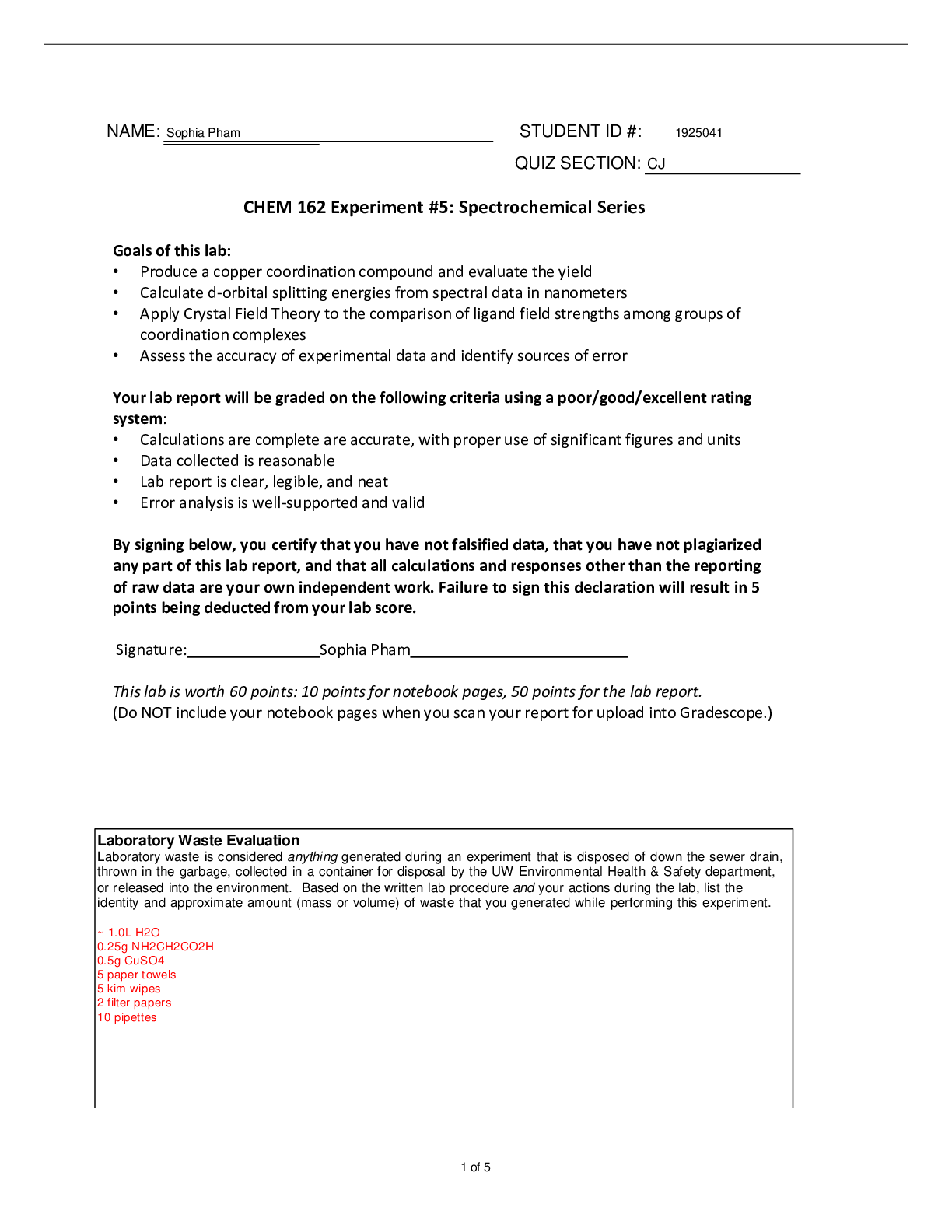Chemistry > Lab Report > SCH3U 101 - Jarvis Collegiate Institute. Unit 3 – Stiochiometry Lab. Experimentally calculate the (All)
SCH3U 101 - Jarvis Collegiate Institute. Unit 3 – Stiochiometry Lab. Experimentally calculate the mass of product, and calculate the percent yield using stoichiometry in the following double displacement “gas forming” reaction: odium carbonate + hydrochloric acid → sodium chloride + carbon dioxide gas + liquid water
Document Content and Description Below
SCH3U 101 - Jarvis Collegiate Institute. Unit 3 – Stiochiometry Lab. Experimentally calculate the mass of product, and calculate the percent yield using stoichiometry in the following double displac ... ement “gas forming” reaction: odium carbonate + hydrochloric acid → sodium chloride + carbon dioxide gas + liquid water Materials & Safety Safety: Be especially careful when handling the 6M HCl (aq), as it can cause chemical burns to the skin. If any acid spills on you, rinse immediately under running water for up to 15 minutes and report the accident to your instructor. Acid spills may also be neutralized using the sodium bicarbonate solution by the sinks. Also, be sure to exercise appropriate caution when using the Bunsen burner and handling hot equipment. Materials and Equipment: Solid sodium carbonate (Na2CO3), 6M hydrochloric acid (HCl), electronic balance, evaporating dish, watch glass (to fit as a cover for the evaporating dish), stand and ring clamp, wire gauze, dropper pipette, stir rod and Bunsen burner. Experimental Procedure Marks for following the procedure correctly and performing the lab safely (should be a freebie for all virtual students) [ /5K] Video of Lab - https://www.youtube.com/watch?v=CuEXNx179oA 1. Measure and record the mass of your clean dry evaporating dish. 2. Measure 0.5 – 0.6 g of solid sodium carbonate (Na2CO3) and record the exact mass. Then carefully add to the evaporating dish. Do not do this over the balance! Measure and record the mass of the evaporating dish + watch glass +Na2CO3. 3. Using your dropper pipette, add the HCl drop by drop to the sodium carbonate in the evaporating dish. You use about 5-mL of hydrochloric acid (HCl). The reaction will be evident by the bubbling that takes place. Be sure to add HCl slowly so that the reaction doesn’t splash outside of the evaporating dish. Continue adding HCl until the bubbling stops and all of the Na2CO3 has reacted –this indicates that the reaction is complete. 4. Assemble the stand, ring clamp and wire gauze apparatus for heating as shown in the figure. Cover the evaporating dish with the watch glass and place it on the wire gauze. [Show More]
Last updated: 2 years ago
Preview 1 out of 5 pages
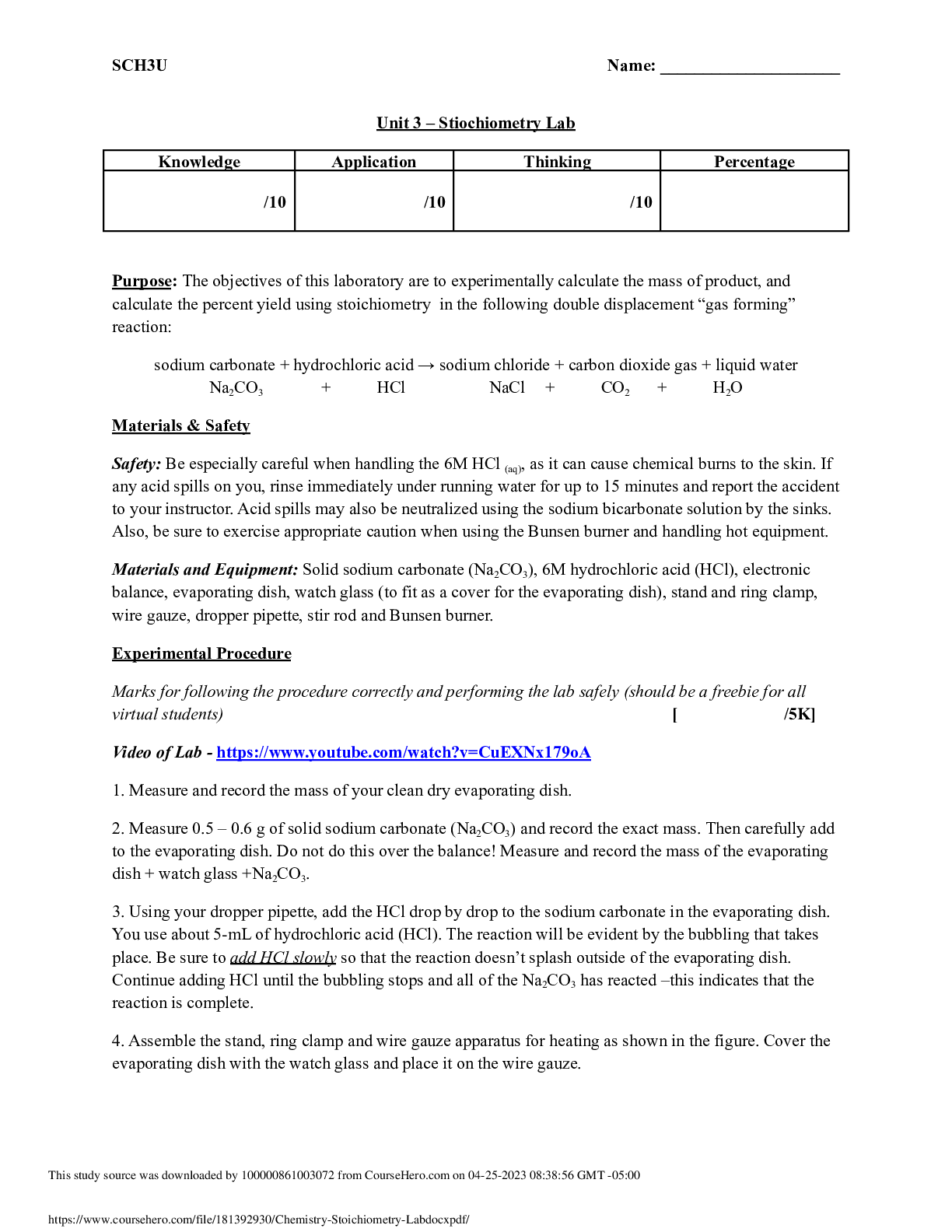
Buy this document to get the full access instantly
Instant Download Access after purchase
Buy NowInstant download
We Accept:

Reviews( 0 )
$9.50
Can't find what you want? Try our AI powered Search
Document information
Connected school, study & course
About the document
Uploaded On
Apr 29, 2023
Number of pages
5
Written in
All
Additional information
This document has been written for:
Uploaded
Apr 29, 2023
Downloads
0
Views
212

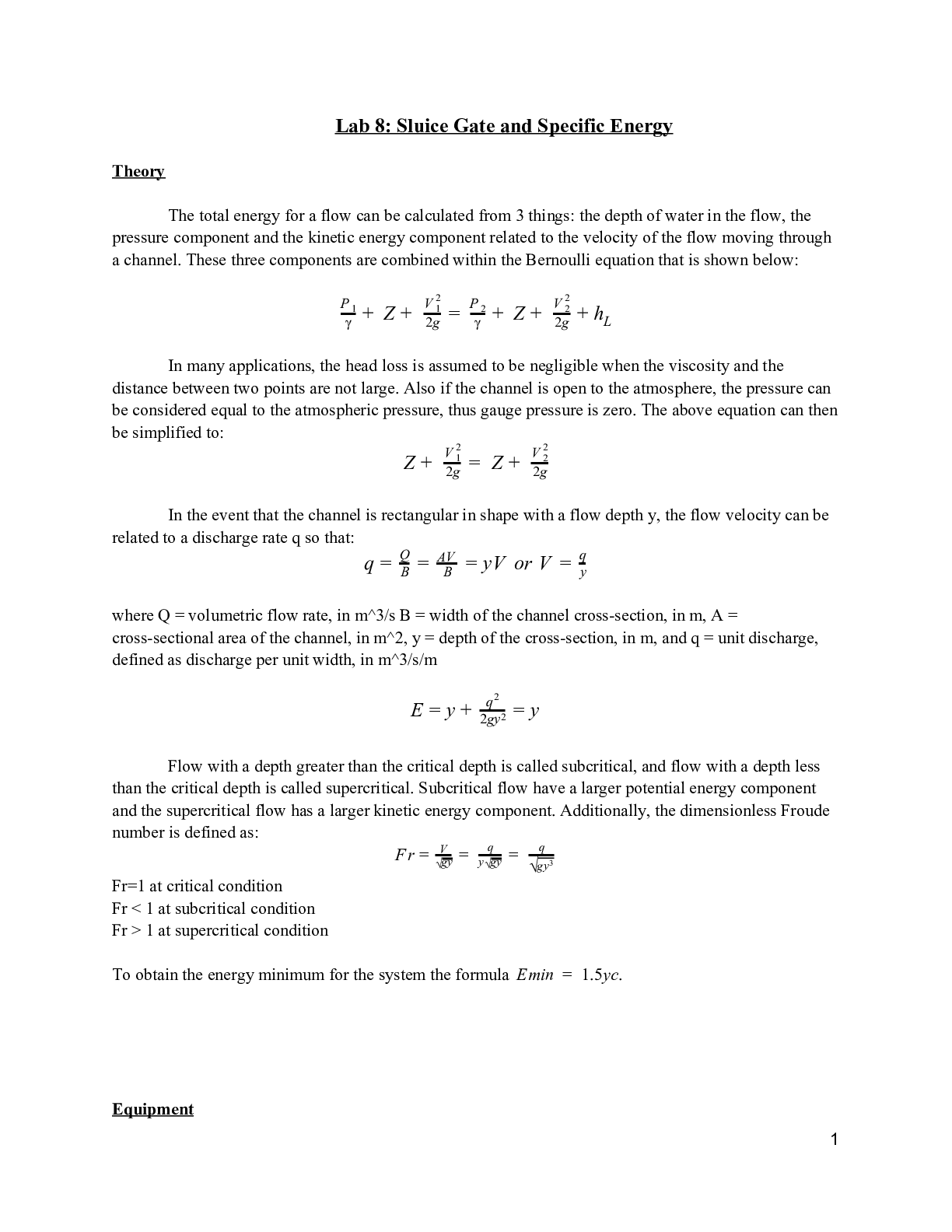
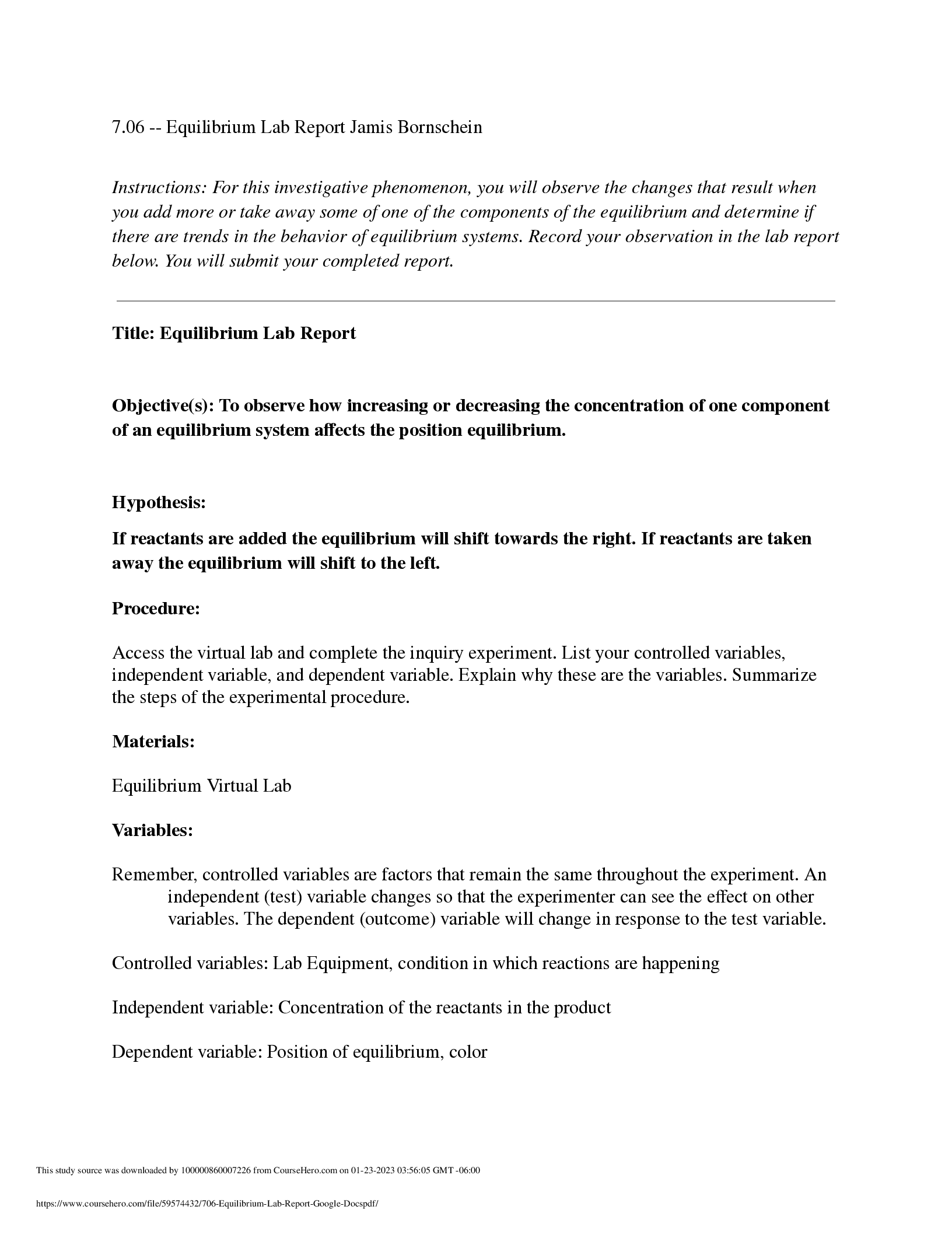







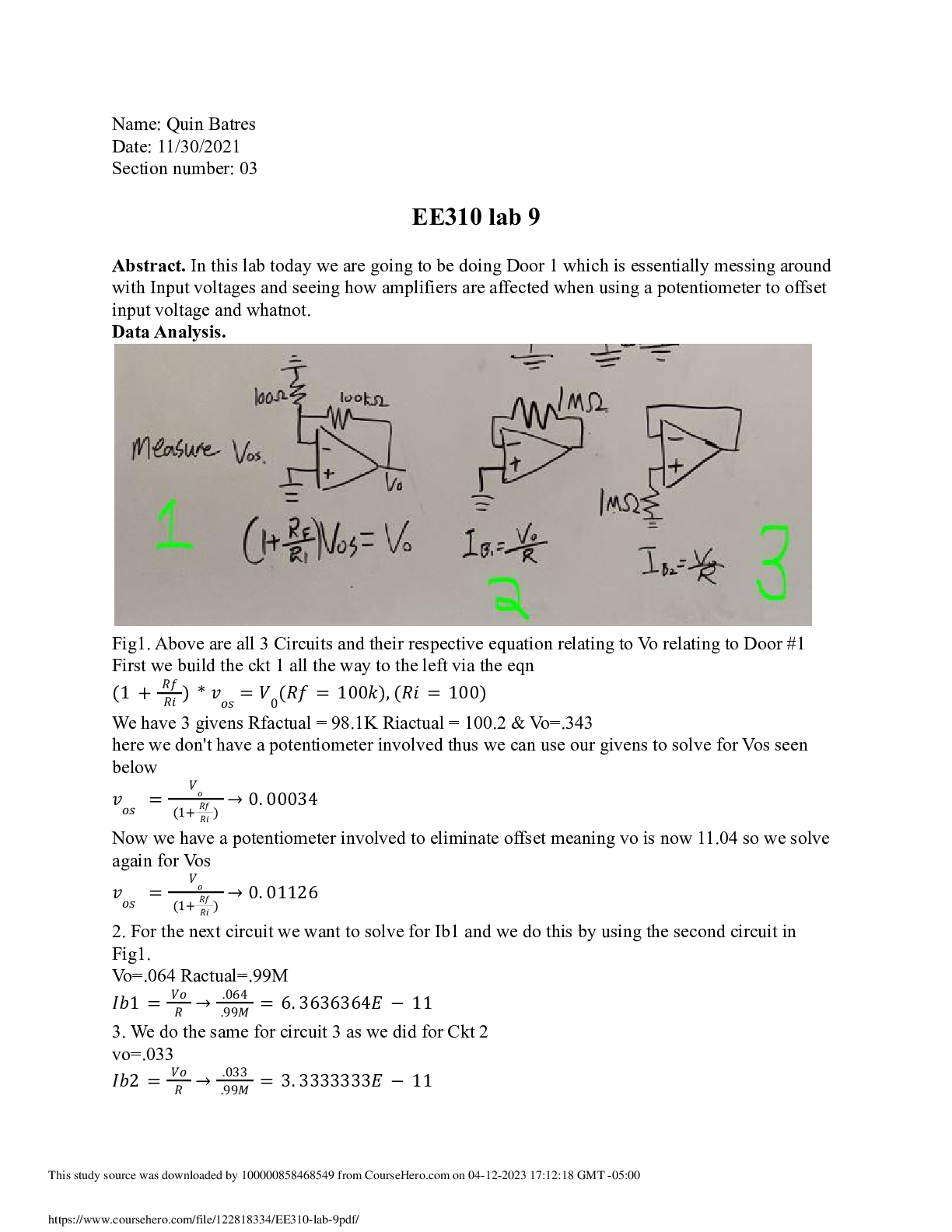
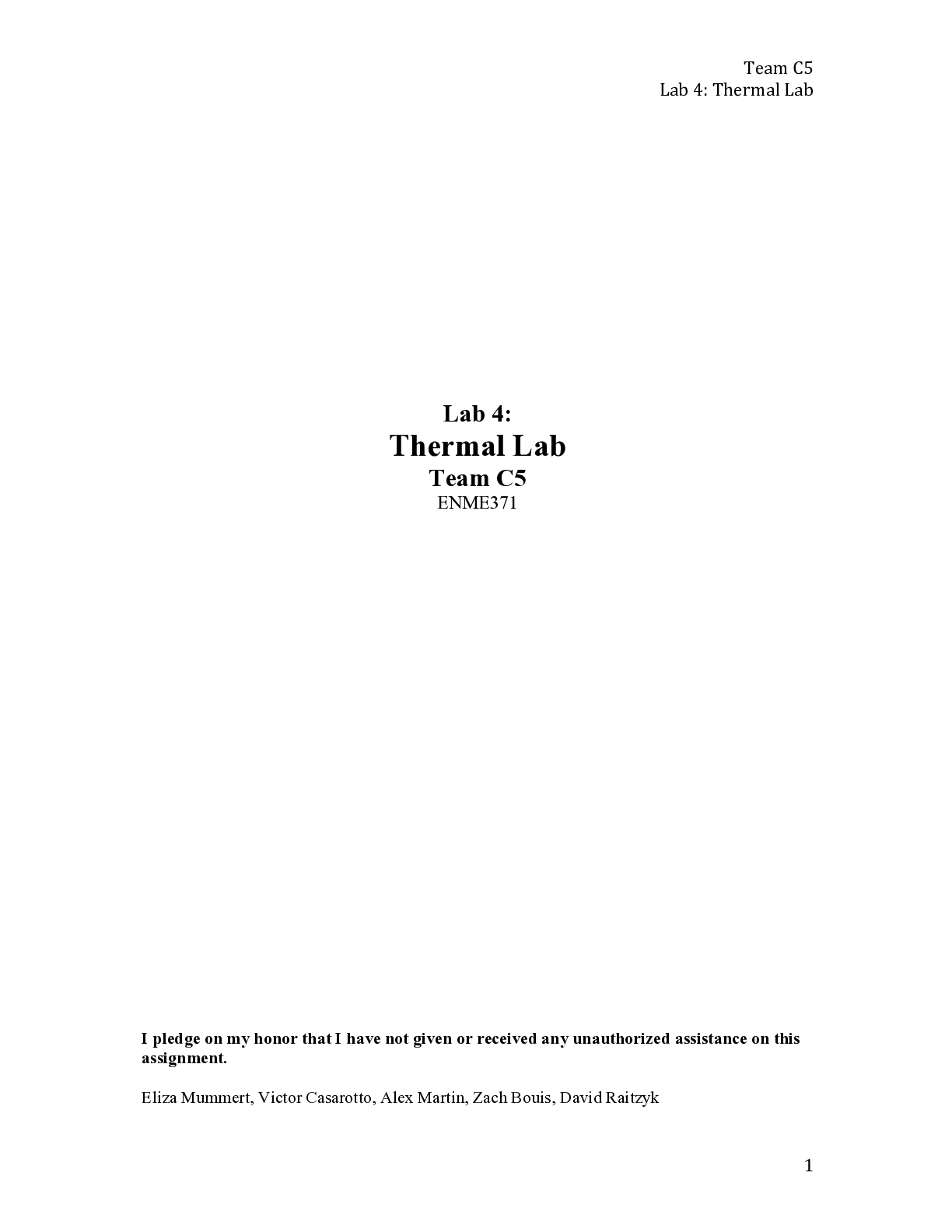
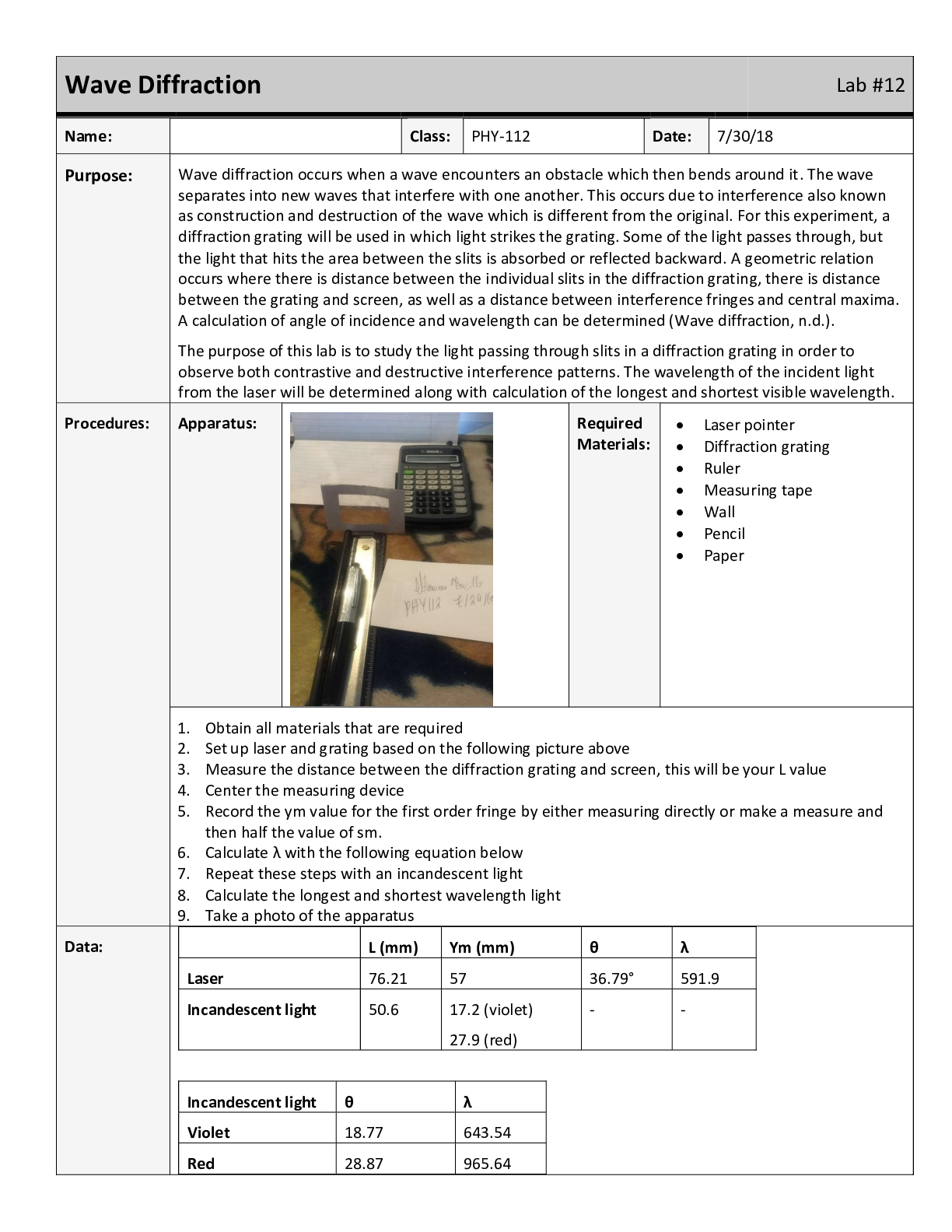

.png)

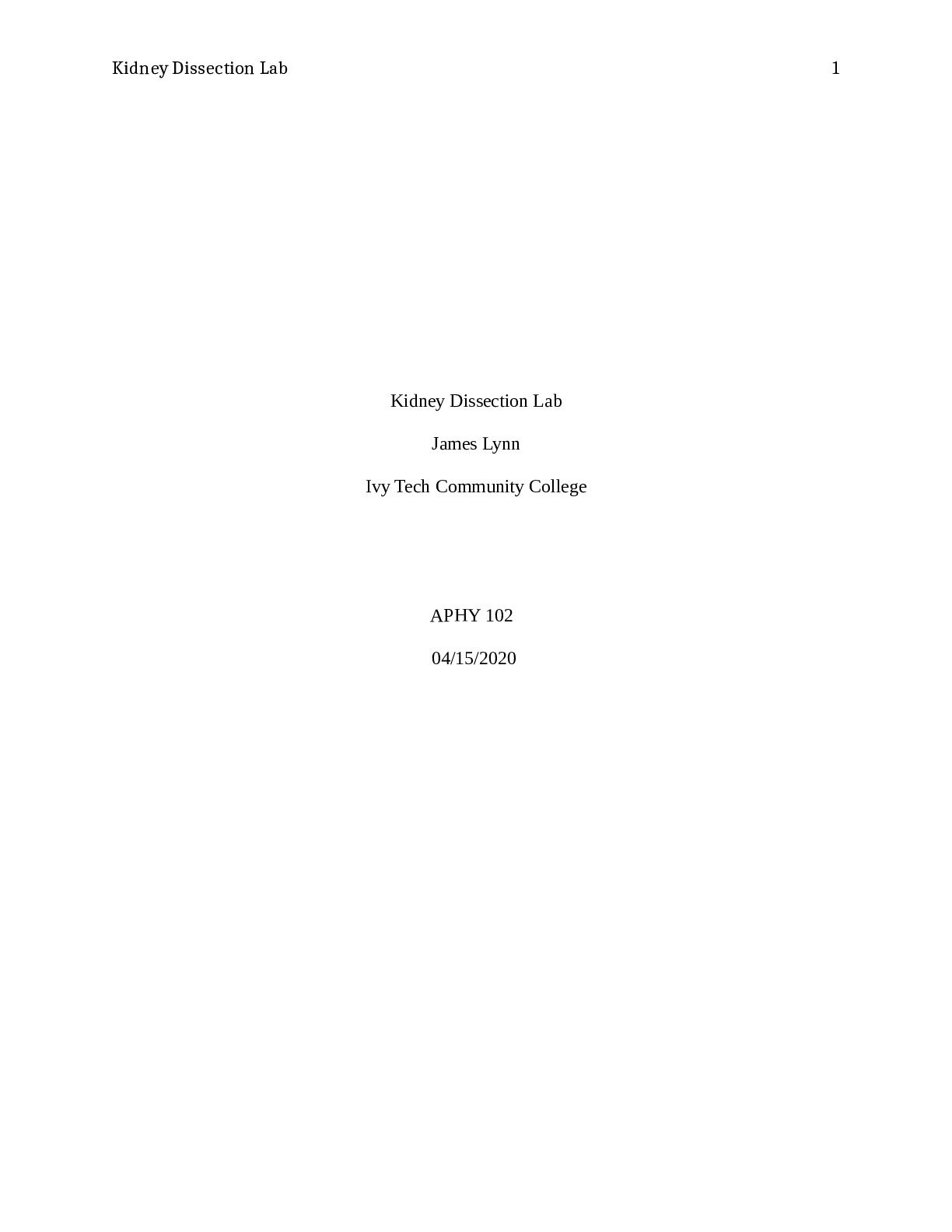



.png)

